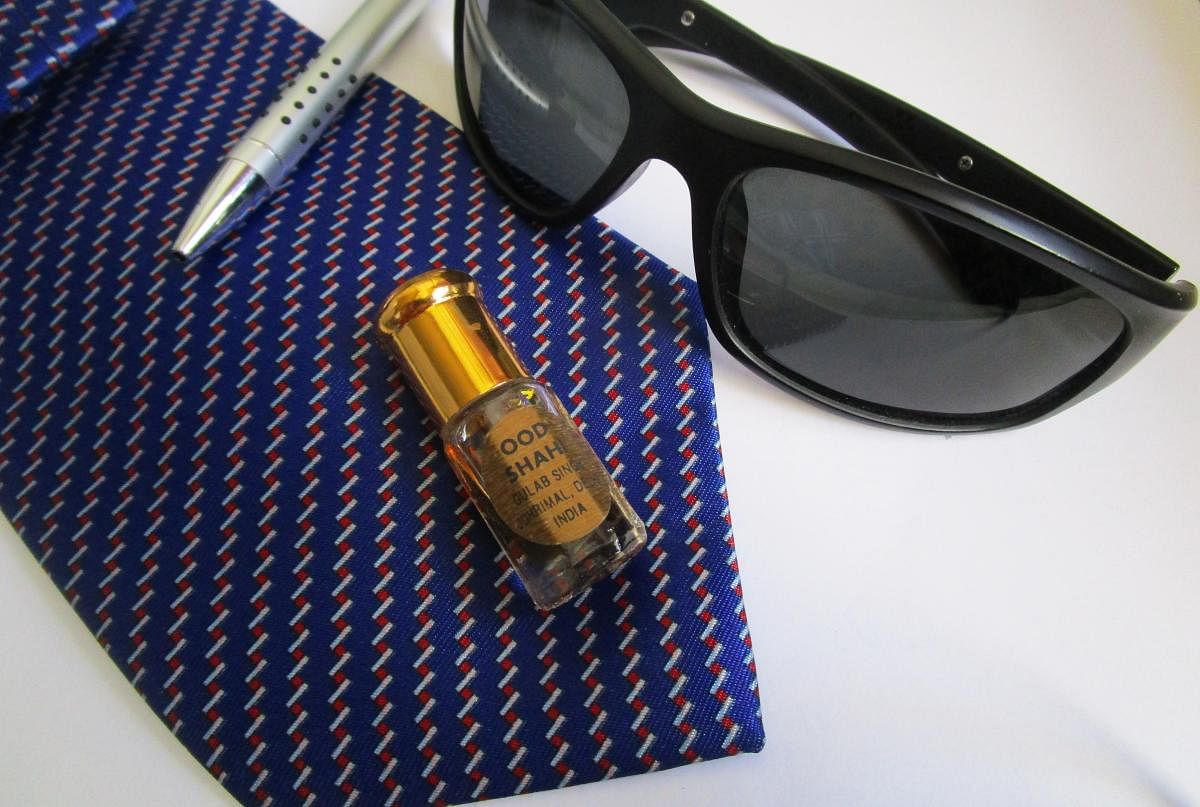
Pour Homme, Pour Femme (for men, for women) tags on food packets? Never seen those till date. How then did we land up tagging fragrance,” laughs perfumer Mukul Gundhi. At his heritage perfumery Gulabsingh Johrimal, men and women from varied nationalities seem like Alice in Wonderland, immersed in an exotic mix of varied fragrances — florals, musks, oud and aqua.

“Fragrance, like food, is connected to the five senses and is a biological function. When we can cook the same food for both sexes, how can we segregate scents,” he questions. The notion itself, Gundhi believes, is a domineering western marketing gimmick.
Science of scent
Deeply and intrinsically connected to personas, cultural conditioning, climates and life experiences, olfactory senses are conditioned to relate to scents in fascinating ways. E P Koster of Ultrecht University, Netherlands mentions in a comprehensive study on odours, “Odours are not ‘things’, unlike visual, auditory and tactile stimuli they do not have structured properties in space and/or time. Odours are notoriously hard to describe, classify and identify.”
Often, the inherent qualities of certain fragrance notes or combinations, or the feelings they evoke can have people associate them with gender. Both sexes can relate to fragrances emotionally. Floral fragrances, along with gentle notes like vanilla, possess and evoke feminine qualities like tenderness, love, sensuality and compassion. The warmer, heavier, more testosteronic and high energy ones like oud, amber, leather, woody and spicy notes are generally associated with masculinity. A Jonah, a fragrance aficionado accepts both, myth and meaning. “Amber is my note. It’s me in a bottle! While many find rose to be quintessentially feminine, I think it adds class to my personality and is universal. But jasmine is where I draw the line.” Though it can often be included as an accord in stereotypically ‘manly’ perfumes, for Jonah, jasmine is among the many scents he would enjoy merely nosing rather than wearing.
While some scents are immensely enhanced by one’s natural body odour, body chemistry and personality irrespective of fragrance family (musky, woody, floral, spicy, citrus, chypre), an inexplicable ‘aha moment’ also determines choices, like noted British perfumer Ruth Mastenbroek rightly opines, “our perceptions, memories and dreams determine whether we fall for a fragrance that was created with a woman, a man, or both in mind.”
Unisex unsung
One cannot deny that French perfumery has done great justice to male and female perfume tags. A Ralph Lauren Supreme Oud with vetiver, pink pepper, Indian oud and guaiac wood sure makes you journey through the forbidding Arabian desert, galloping stallions of hot-blooded Bedouins dashing over the dunes. Gucci Bamboo on the other hand, a favourite of many female millennials enhances a woman’s underlying sensuality with its amazing longevity and a subtle animality in the dry down, thanks to the magnificent treatment of amber, vanilla and sandalwood base notes.
Other perfumery traditions however, dare to differ. The Arab World has nurtured oud since centuries. The aged oil of Indian and Cambodian agarwood or oud has been central of Middle Eastern life. While the men wear pure oud extract known as Dehn Al Oud, Arabic for ‘fat of the wood’ on their skins or clothes, the women too, perfume their hair with the oil. Rose, often perceived as feminine, is sought after by both sexes with Saudi Arabia’s legendary Ta’ifi Roses yielding exquisite extract oil extensively employed in Arabian perfumery.
Oud plays a pivotal role in Arabian perfume blends in variable grammages, far surpassing gender labels. The tags however, still seem to surface occasionally in Gulf markets especially with the younger generation. Originally hailing from Udipi, perfumer Guru Acharya of Nandita Fragrances blames ‘pour’ for our poor sense of choice. “Over time, pour homme and pour elle have greatly handicapped our perception of fragrance by confining it within these perceived labels. However, while the men are more conscious about not wanting to smell feminine, women are more adventurous,” he says.
Pioneer of perfumery
India is a treasure chest of the world’s finest extracts derived from the ancient science of distilling natural materials. Rooh Motia or extract of jasmine sambac, Rooh Gulab from Damascus Rose and Rooh Khus or vetiver oil have been cherished and enjoyed by both sexes since time immemorial. Agarwood finds prominence in Ayurveda and as an age-old aphrodisiac. “When did our forefathers, or nature ever segregate fragrances based on gender,” asks Acharya.
Fear, according to homemaker Gauri Vyas, narrows one’s sense of choice. She happily shares Tom Ford Black Orchid with her married son, the amber, patchouli and sandalwood base notes being palatable to both. “For many, switching tags seems like cross-dressing. We live in a judgemental society. A person’s sexual orientation is often questioned by his or her choice of fragrance. It’s pretty alright for a woman to wear a heady Oud Mukhallat or a dominant leather, but a man wearing Dior Poison Girl would have some explaining to do.”